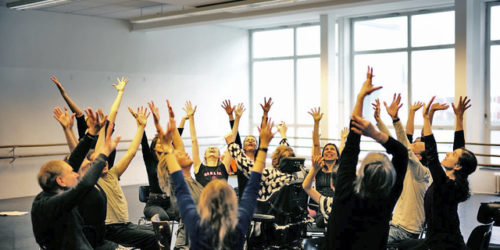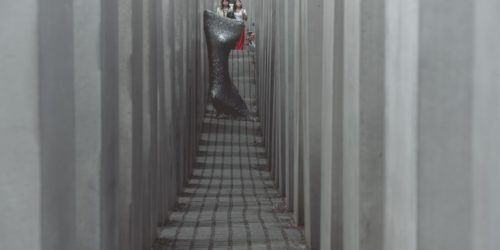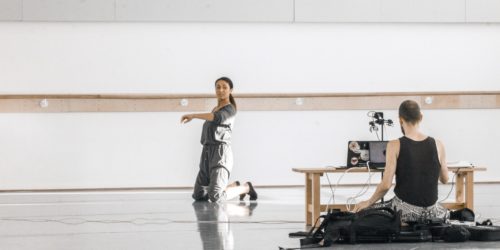Searching for the dance of meaning – Basque Bertsolaritza as a tool for dance making. Rafal Dziemidok
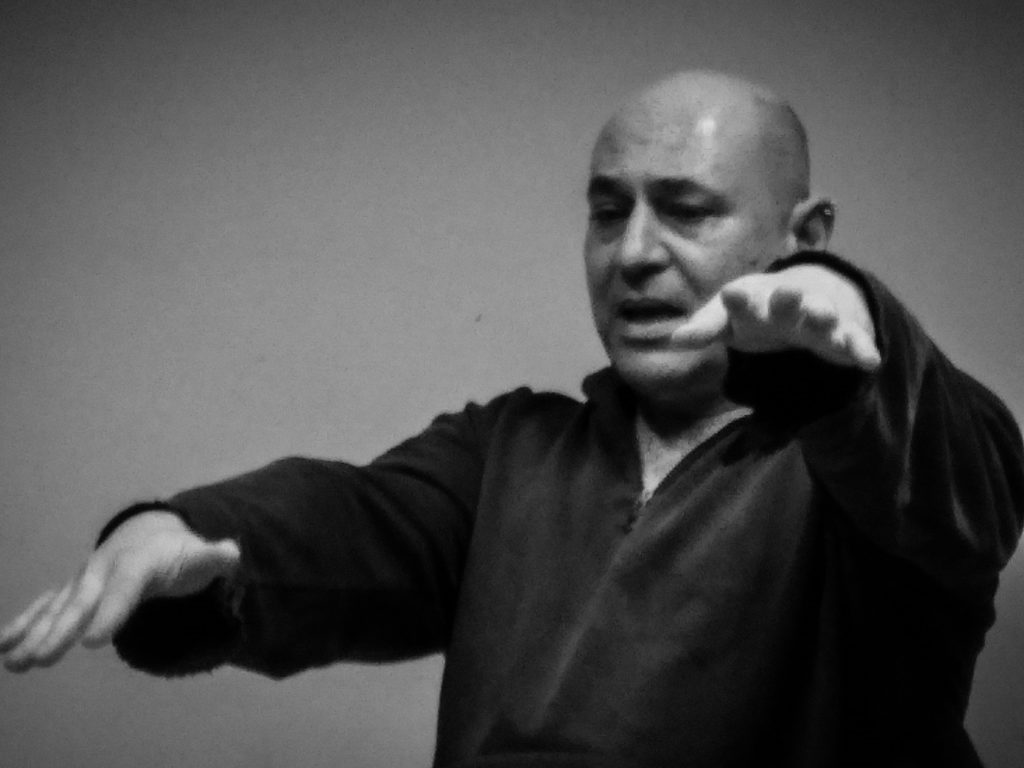
Bertsolaritza is a form of improvised contest poetry deriving from Basque oral tradition. It is performed in Basque, maybe the oldest language in Europe. There are 900 000 speakers of Basque in the world, 67 percent of which follow with interest the Bertsolari contest especially the National Championship of Bertsolaritza, Bertsolari Txapelketa. It is a 1 day event, selling up to 14 000 tickets, lasting 6-7 hrs, covered by TV, accompanied by experts and commentaries. It is preceded by 4 years long qualification and elimination process. It has been held, every four years since 1936. This handful of facts is useful to understand just how important Bertsolaritza is for its artists, audience and for the local communities.
Bertsos, the improvised poems, are sung, measured and rhymed. They are improvised on the spot by a soloist or in a paired, sung dialog (duet). They are created according to a set of rules: the topic is given by an emcee, there is less than a minute for the preparation to improvise an 8-12 line poem along the pattern of prescribed verse form, which also involves a rhyme scheme, to a melody sung a capella, chosen from hundreds of traditional tunes. Bertsolaritza is a form of expression of identity but also an academy for listening, a form of communication between the artists and the audience and between artists themselves.
I am a dancer, a choreograher and an improviser with 29 years of experience of experimental work in the field of contemporary dance/theatre/performance art. My artistic development path took me to a point where I know that my interest in dance is setting movement to the music, an idea which in tself seems not experimental. Going deeper into it, one sees however the importance and complexity of the questions: what movement and what music. It is vital to understand how do they function together in a dance piece, reinterprete one another, do they carry narration, what narration, how do they work with the audience.
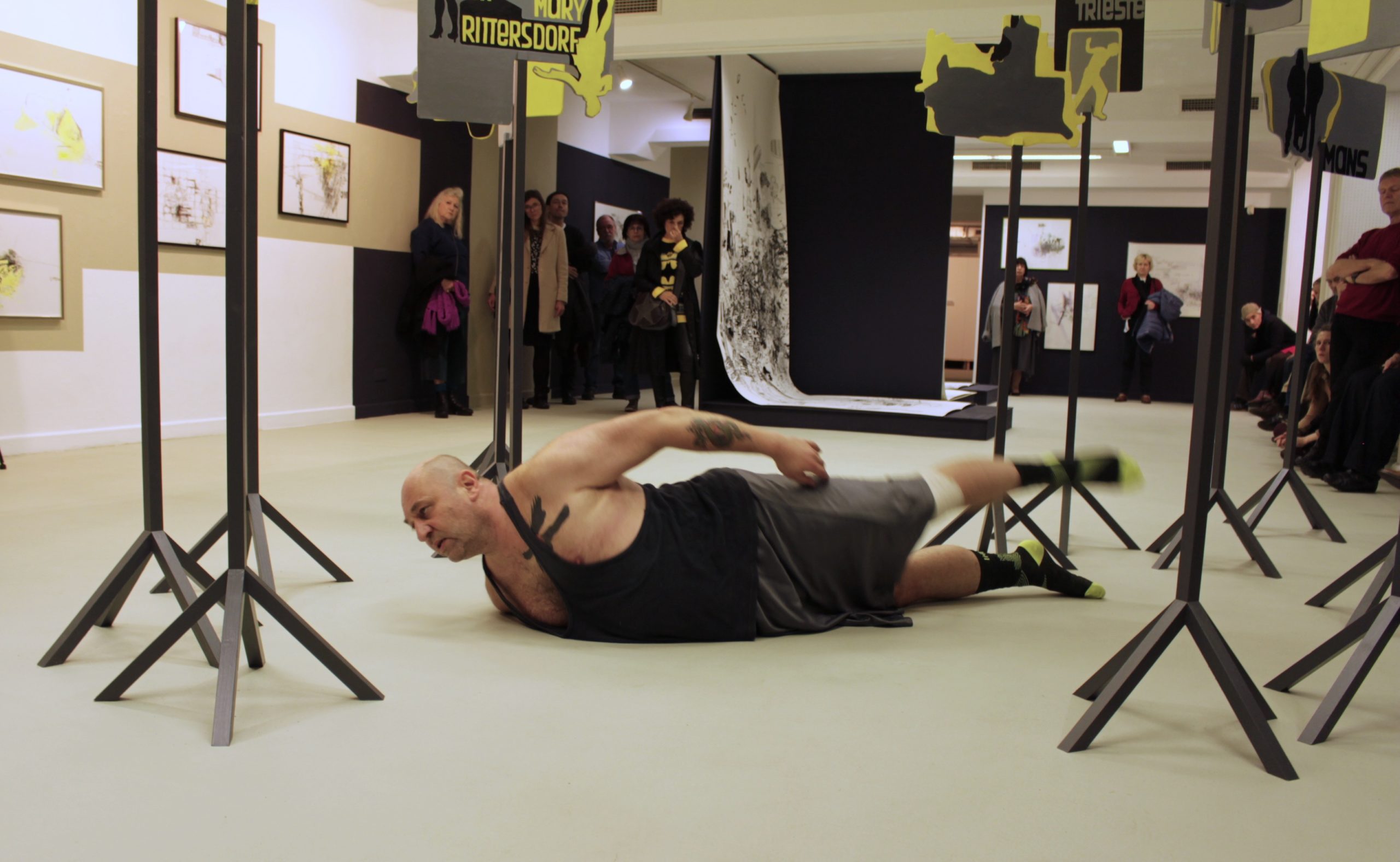
Those questions have been the crux of my work over recent years. Interestingly, asking and answering them is also fundamental in defining, understanding and practicing Bertsolaritza, a complex tradition of improvisation, abundant with structures, patterns, composition solutions, at the same time allowing and demanding creativity from its artists. I can’t help but be fascinated by it. Additionally, I identify with heroic efforts of the Bertsolaris to communicate a message which they cannot ever say clearly, as Bertsos are always sohisticated formally, which makes them abstract, universal and subject to emotional interpretation. That is exactly what dance is like too. The research which I have been carrying out since the beginning of August 2021 tries to employ Bertoslaritza and its rules with the reservation that instead of words, one works with movement. I hope to set a structure which would allow the vocal tradition of improvisation to be used as a pattern or as an original and efficient strategy for generating movement, composing and most of all teaching dance improvisation.
The basic questons which must be asked in such a research are what could all the terms and rules for improvisation used in Bertsolaritza mean in dance improvisation. What would be measure, rhyme, verse, melody in dance improvisation? How are vocal and dance improvisations different? Is ‘danced’ Bertoslaritza improvisation or more dance composition – yet another score for an instant composition practice? Last but not least, Bertsolaris don’t sing just any rhyming and measured words, they pick words in order to achieve communication, so they have a meaning even if that meaning is not direct. What would that mean in dance? How such thinking could help a dancer to make choices about the movement language she picks to communicate?
The artists of Bertsolaritza never say literally what they want to say, because of the strict form they need to conform with in their practice. Dancers never say literally what they want to say, either, as they technically don’t even speak. My intuition tells me however, that exactly what makes it impossible for the ‘speakers’ to be literal – the precise set of formal rules, can be a blessing for the dancers when they use them as tools to enhance the meaning of their dance.



